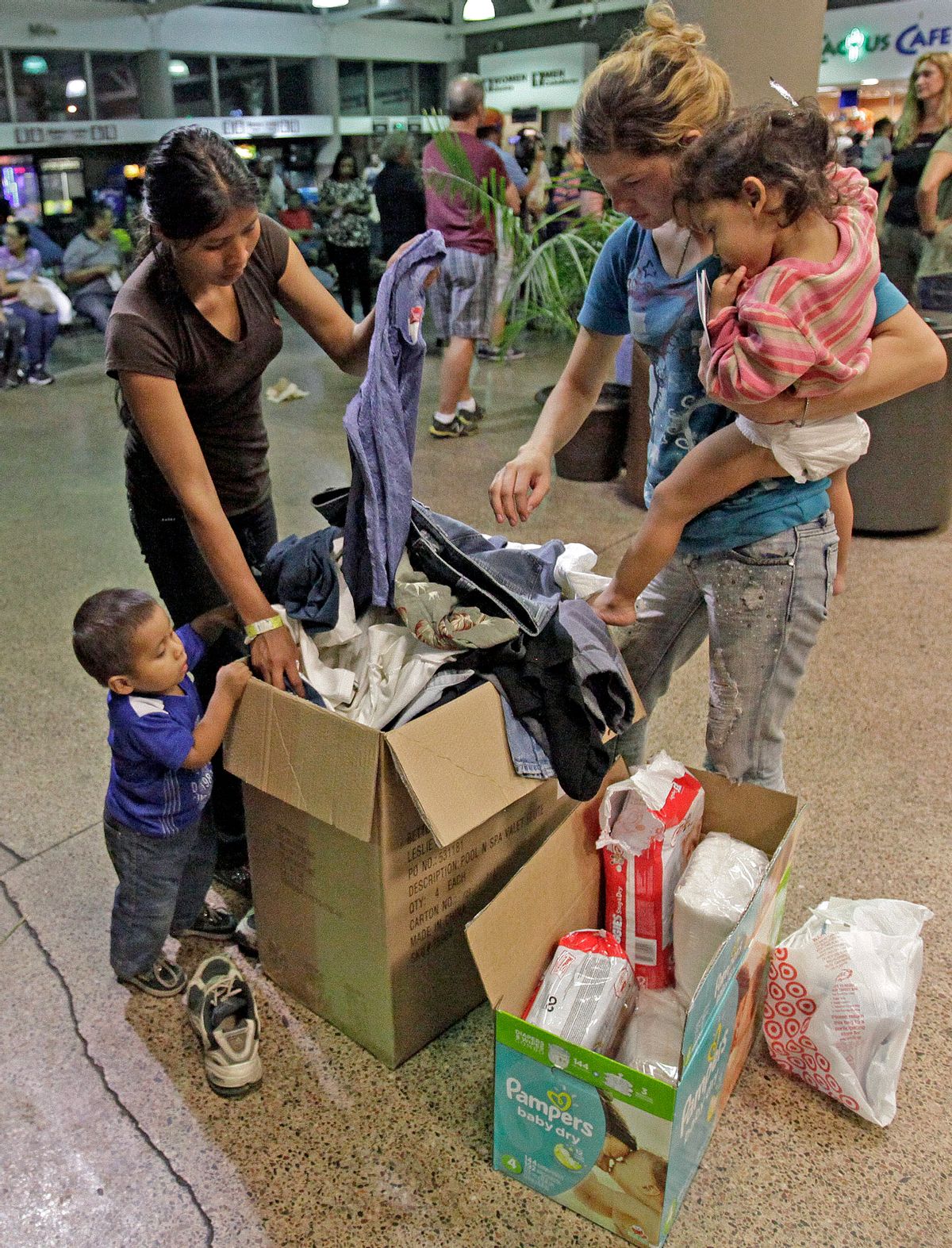While the nation’s attention is currently focused on the southern border, what’s being forgotten is that millions of undocumented immigrants continue to live in the U.S. – and most of them work.
And in fact, these workers play vital roles in the U.S. economy, erecting American buildings, picking American apples and grapes, and taking care of American babies. Oh, and paying American taxes.
My work as the director of the Cornell Farmworker Program involves meeting with undocumented workers in New York, and the farmers who employ them. Here’s a snapshot of who they are, where they work – and why Americans should care about them.
Pew Research Center estimates that about 11.3 million people are currently living in the U.S. without authorization, down from a peak of 12.2 million in 2007. More than half come from Mexico, and about 15 percent come from other parts Latin America.
About 8 million of them have jobs, making up 5 percent of the U.S. workforce, figures that have remained more or less steady for the past decade.
Geographically, these unauthorized workers are spread throughout the U.S. but are unsurprisingly most concentrated in border states like California and Texas, where they make up about 9 percent of both states’ workforces, while in Nevada, their share is over 10 percent.
Their representation in particular industries is even more pronounced, and the Department of Agriculture estimates that about half of the nation’s farmworkers are unauthorized, while 15 percent of those in construction lack papers – more than the share of legal immigrants in either industry. In the service sector, which would include jobs such as fast food and domestic help, the figure is about 9 percent.
Further studies show that the importance of this population of workers will only grow in coming years. For example, in 2014, unauthorized immigrants made up 24 percent of maids and cleaners, an occupation expected to need 112,000 more workers by 2024. In construction, the number of additional laborers needed is estimated at close to 150,000. And while only 4 percent of personal care and home health aides are undocumented, the U.S. will soon require more than 800,000 people to fill the jobs necessary to take care of retiring baby boomers.
Vital to American farms
Since agriculture is the industry that’s most reliant on undocumented workers – and it’s my area of expertise and research – let’s zoom in on it.
Overall, the agricultural industry in the United States has been on the decline since 1950. Back then, farming was a family business that employed more than 10 million workers, 77 percent of whom were classified as “family.” As of 2000 – the latest such data available – only 3 million work on farms, and as noted earlier, an estimated half are undocumented.
Increasingly, dairy farms such as those in New York rely on workers from Mexico and Guatemala, many of whom are believed to be undocumented. Currently, there is no visa program for year-round workers on dairy farms, so the precarious status of these workers poses serious concerns for the economic viability of the dairy industry.
In recent research conducted by the Cornell Farmworker Program, 30 New York dairy farmers told us they turned to undocumented workers because they were unable to find and keep reliable U.S. citizens to do the jobs. That’s in part because farm work can be physically demanding, dirty and socially denigrated work. More importantly, it is one the most dangerous occupations in the U.S.
A study commissioned by the dairy industry suggested that if federal labor and immigration policies reduced the number of foreign-born workers by 50 percent, more than 3,500 dairy farms would close, leading to a big drop in milk production and a spike in prices of about 30 percent. Total elimination of immigrant labor would increase milk prices by 90 percent.
The U.S. fruit, vegetable and meat industries are similarly at risk, and without the help of unauthorized workers, production would drop and consumers would likely see higher prices.
This has become of particular concern as immigration enforcement in agricultural communities intensifies.
Although the focus is usually on the southern border, what happens in the north matters as well, in part because the Border Patrol’s 100-mile jurisdiction means immigrants living in most of New England can be pursued anywhere. As such, the surge in immigration enforcement along the border with Canada in recent years has resulted in more farmworkers being deported.
It also has meant fresh produce has been gone unpicked, left to rot in fields. One New York apple grower told us that due to labor shortages and dwindling prices for his red delicious variety, he plans to let his 100-year-old orchard go, because any investments in production would result in significant economic loss.
Who cares? Most Americans
Judging by the pronouncements from the White House, you might think most people don’t realize how integral undocumented immigrants are to the U.S. economy. But in fact, polls suggest that Americans do understand this, and also don’t believe that immigrants take their jobs.
In a soon-to-be-published poll Cornell conducted in 2017, we asked New Yorkers, “How do you believe undocumented farmworkers impact local communities?”
About 75 percent of those we polled said they have “generally positive impacts,” up from 62 percent in 2008. Of those who had a positive impression, most said it was because migrants fill jobs unwanted by citizens or provide essential farm help and keep prices low.
And national polling backs this up. A 2016 Pew poll found that 76 percent believe undocumented immigrants are as honest and hard-working as U.S. citizens, while 71 percent said they mostly fill jobs that Americans aren’t willing to do.
Not only are there lots of reasons to care, the vast majority of Americans actually do.
![]() This article has been updated from its original version.
This article has been updated from its original version.
Mary Jo Dudley, Director of Cornell Farmworker Program, Cornell University
Top Trending



Shares